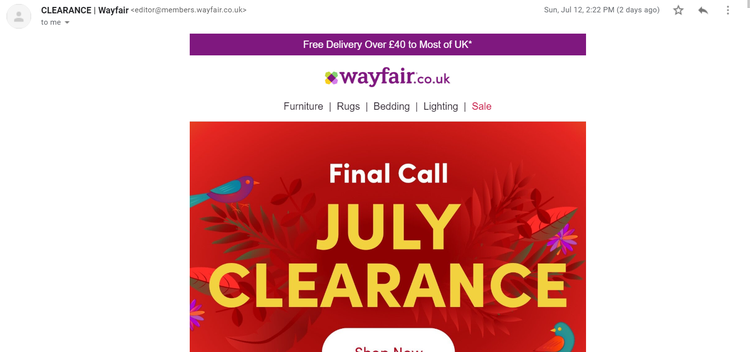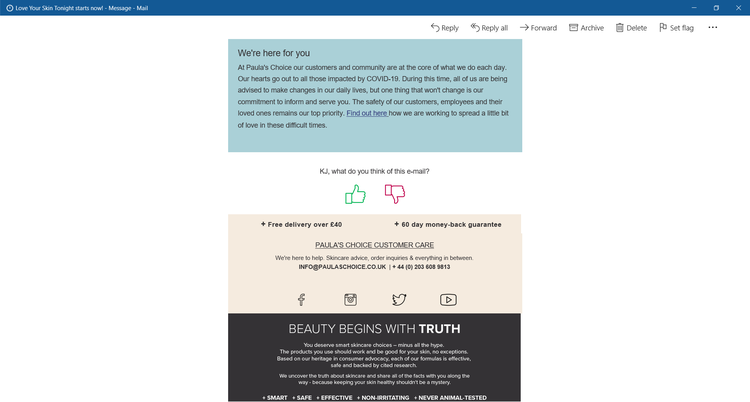One of the main hurdles all email marketers face -- whether they’ve just started out or they’ve been sending newsletters since email was invented -- is getting their missives past spam filters.
Even if you’re running successful campaigns and your open and click-through rates are through the roof, one false move, and your email can end up getting caught by an email spam filter. In fact, almost a quarter of permission-based emails sent by legitimate email marketers end up in junk folders.
What are SPAM filters?
Internet service providers (ISPs) such as AT&T and Verizon, and email providers such as Gmail and Yahoo!, use spam filters to keep irrelevant messages and junk email from landing in your inbox, whether they're phishing scams or they're just “spammy.”
Sometimes they’ll completely block the email from reaching the email account, and sometimes they’ll route it to a recipient’s junk folder. Each ISP and email provider uses different criteria to decide whether to mark an email as spam. This makes the filters difficult to predict, but there are some basic ground rules.
Make sure your messages are free of broken links, typos, sloppy code, and poor content. Once those basics are covered, be sure to avoid these five red flags that can trigger spam filters.
Email marketing software can help you avoid falling victim to spam filters by scanning your emails for any issues such as broken links, enabling you to test how an email is displayed on different devices, and assigning your missive a score according to how likely it is to end up in a recipient’s junk email folder.
Zoho Campaigns makes you send test versions of your first five emails and provides a reputation score based on its anti-spam criteria. HubSpot Marketing Hub creates reports that enable you to track spam notices.
Benchmark Email runs a spam check, which picks up issues such as broken links, design issues, and typos, and it also gives you tips for how to avoid spam filters. For example, when you are writing your subject line, Benchmark suggests that you should avoid using all caps and excessive punctuation.

Benchmark Email provides tips to help you avoid spam filters. Image source: Author
5 spam types of trigger words to avoid in your email marketing campaign
This is by no means an exhaustive list of all the types of trigger words to avoid, but here are the main crimes that will land the efforts of your email marketing campaigns in a spam filter.
1. Manipulative words
While one of the most important best practices for creating an email is adding a CTA that encourages readers to take action, you can take this too far and be too obvious in your selling techniques.
It’s a bit like the story of the boy who cried wolf; if you mark everything urgent, and you’re always telling your recipients that they have to take action immediately, then they’ll start ignoring you and won’t believe you even when something is urgent.
They’ll stop reading your emails, your open and click-through rates will plummet, and it will be more likely your email will end up in their spam folder.
Here are the manipulative words you should avoid:
- Urgent
- Act now
- Immediately
- Order now
- Limited offer
- Expires today
- Apply now
- Buy today
- Call now
- Exclusive deal
- Final call
Take this email from furniture retailer Wayfair. It sends final clearance and sales emails almost every day, so the effect has worn off, and I’ve stopped opening them.

Avoid using words like “final call” in your emails. Image source: Author
2. Outlandish claims
If it sounds too good to be true, then it probably is. Most people have gotten wise to over-the-top claims and false promises. They know that your product or service is unlikely to fulfill their dreams or solve all their problems immediately. If you oversell, your recipients will either unsubscribe or mark you as spam.
Here are the outlandish claims you should avoid:
- Once in a lifetime
- While you sleep
- Money-making
- Earn extra income
- Reverses aging
- Money-back guarantee
- No hidden costs
- Free money
- Lose weight fast
- Earn extra cash
- All-natural
It’s better to be realistic with your claims and back them up with social proof. Instead of setting unrealistic expectations, use customer reviews in your email to show the benefits of what you’re selling.
This email from British grocery retailer Waitrose uses expert opinions and other shoppers’ ratings rather than outlandish claims to encourage you to buy its wines.

Use social proof, not outlandish claims, to encourage sales. Image source: Author
3. Inappropriate greetings
It’s easy to personalize subject lines and greetings these days; even free email marketing software automatically fills in your recipients’ names. So, there's no excuse for using greetings that make it more likely your email will be flagged as spam.
- Dear
- Dear friend
- Greetings of the day
- Dear
- Hello (with no name included)
4. Needy and spammy subject lines
Don’t come across as needy in your subject lines (or anywhere in your email), and don’t be overly polite and beg your email recipients to open and read your email.
You'll come across as untrustworthy or shady and will make both email providers and your recipients suspicious. It’s a surefire way to end up getting caught in a spam filter. And, even if your email does get through, it will make your recipients wonder why you’re so desperate for business.
And avoid spammy words in general in your subject lines if you don’t want email providers to put you on their blacklists.
Here are some examples of typical spam email subject lines:
- Please open
- Please read
- Click here
- Can you help us?
- Can we have a minute of your time?
- Instant weight loss
- Save big
If you’re not sure if you’re doing the right thing, ask your recipients what they think of your email. Make it really easy: This email from beauty brand Paula’s Choice asks only for one click of a thumbs-up or thumbs-down button.

You can get your recipients to do what you want without getting desperate. Image source: Author
5. Words that say your email isn’t spam
If your email isn’t junk, then you don’t have to tell people that; it should immediately be obvious. You should have created a properly designed email, written concise copy, included relevant information, and tested it to check that all links work properly and it shows up correctly on all devices.
Also, make sure you are respecting privacy laws and are only sending it to people who are on your email list and have subscribed to your email blasts.
That’s how you avoid ending up in spam traps, not by telling people you aren’t junk. Here are the spam filter words and phrases you should avoid.
- This isn’t junk
- This isn’t spam
- Not spam
- Spam free
- Mark this as not junk
Make it easier on yourself
There is no surefire way to avoid spam filters. That’s why it’s important to take your time to create your email, ensure your copy is on point, and make sure your recipients are expecting it.
Ask them to add your email to their address book to make sure it goes through, and be sure you’ve enabled double opt-in, which requires recipients to confirm they definitely want to subscribe.
And make your life easier by finding email marketing software that can alert you to anything that might trigger spam filters. A little bit of care will make sure your emails make it all the way to their targets.
Our Small Business Expert
We're firm believers in the Golden Rule, which is why editorial opinions are ours alone and have not been previously reviewed, approved, or endorsed by included advertisers. The Ascent does not cover all offers on the market. Editorial content from The Ascent is separate from The Motley Fool editorial content and is created by a different analyst team.